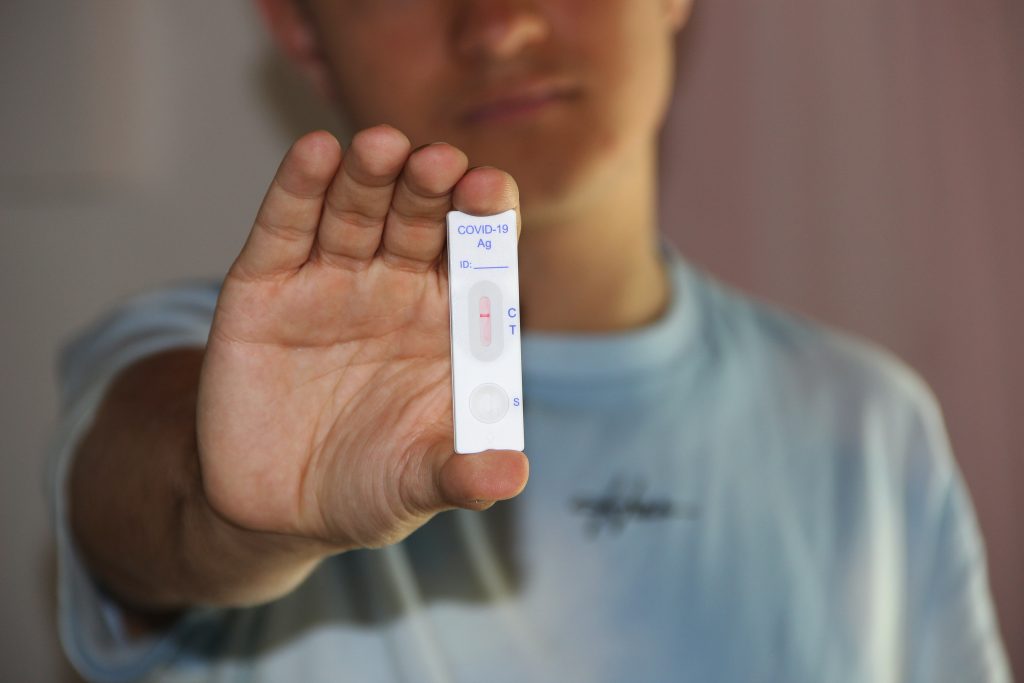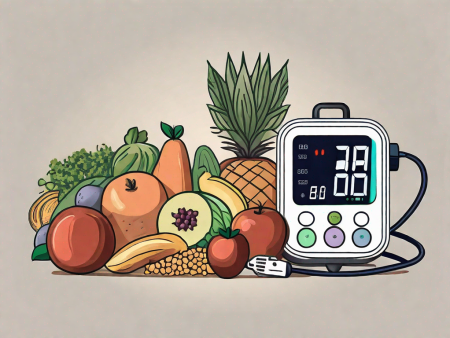Discover the essential guidelines for prostate cancer screening and gain valuable insights on what you need to know.
Guidelines for Prostate Cancer Screening: What You Need to Know

Prostate cancer is a serious health concern that affects millions of men worldwide. With the right knowledge and proactive measures, however, it’s a battle that can be fought and won. In this article, we’ll dive deep into the guidelines for prostate cancer screening, equipping you with the information you need to protect yourself and stay healthy. So, let’s get started!
Understanding Prostate Cancer
Before we embark on our screening journey, let’s take a moment to understand what prostate cancer is all about. The prostate gland, a little walnut-shaped wonder nestled beneath the bladder, plays a vital role in a man’s reproductive system. It produces fluid that nourishes and transports sperm. Unfortunately, sometimes this gland can turn into the villain, giving rise to prostate cancer.
Prostate cancer is a complex disease that affects millions of men worldwide. It occurs when the cells in the prostate gland start to grow uncontrollably, forming a tumor. This tumor can then spread to other parts of the body if left untreated.
The Role of the Prostate Gland
The prostate gland might seem like a minuscule player in the grand orchestra of our bodies, but boy, does it pack a punch! Apart from its reproductive function, this small powerhouse also keeps those pesky urine leaks at bay. It’s like having a superhero guardian in your pelvic region!
Not only does the prostate gland produce the fluid that nourishes and transports sperm, but it also plays a crucial role in controlling the flow of urine. It surrounds the urethra, the tube that carries urine from the bladder out of the body. The prostate gland acts as a valve, ensuring that urine flows smoothly and without any leaks.
Imagine a world without a functioning prostate gland. It would be like a symphony without a conductor, chaos in the urinary system! So, let’s give a round of applause to this tiny gland for the incredible work it does.
Common Symptoms of Prostate Cancer
Prostate cancer is like a sneaky ninja—silent and deadly. It often shows no symptoms in its early stages, leaving many men blissfully unaware of its presence. However, if you notice any changes in your urination patterns, such as a weak or interrupted flow, frequent bathroom visits, or blood in your urine, it’s time to take off your blindfold and pay attention to the signs.
While these symptoms can be caused by other conditions as well, it’s essential to get them checked out by a healthcare professional. Early detection is key when it comes to prostate cancer, as it increases the chances of successful treatment and recovery.
In addition to urinary symptoms, prostate cancer can also cause other signs and symptoms, such as pain or discomfort in the pelvic area, bone pain, erectile dysfunction, and unexplained weight loss. If you experience any of these symptoms, it’s crucial to seek medical advice promptly.
Remember, knowledge is power when it comes to your health. Understanding the role of the prostate gland and being aware of the common symptoms of prostate cancer can help you take proactive steps towards early detection and prevention.
The Importance of Prostate Cancer Screening
We’ve laid the groundwork, but now it’s time to delve into the real heart of the matter—why is prostate cancer screening so crucial? The answer is simple—early detection saves lives. By identifying prostate cancer in its initial stages, we significantly increase the chances of successful treatment and a positive prognosis.
Prostate cancer is a formidable opponent, lurking in the shadows of the male reproductive system. Like a skilled ninja, it can silently infiltrate the prostate gland, growing undetected until it’s too late. However, with regular screening, we can become the ultimate detectives, equipped with the tools to uncover this stealthy enemy.
Early Detection and Prognosis
Imagine you’re playing a high-stakes game of hide-and-seek. The sooner you find the sneaky seeker, the faster you can claim victory, right? Well, the same principle applies to prostate cancer. The earlier we detect it, the better the prognosis and the higher the chances of a positive outcome. So, let’s put on our detective hats and start seeking out those ninja cancer cells!
When prostate cancer is caught in its early stages, it is often confined to the prostate gland, making it more treatable. With timely intervention, the chances of successful treatment and long-term survival increase significantly. This means that regular screening can be a game-changer, giving men the upper hand in their battle against prostate cancer.
Moreover, early detection allows for a wider range of treatment options. When prostate cancer is diagnosed at an advanced stage, treatment options may be limited, and the disease may have already spread to other parts of the body. However, by catching it early, men have a better chance of exploring less invasive treatment methods, such as radiation therapy or targeted drug therapies.
Who Should Consider Screening?
Now that we’ve established the importance of screening, let’s talk about who should jump on the screening wagon. While recommendations may vary among medical professionals, most agree that men aged 50 and above should seriously consider regular prostate cancer screening. However, if you have risk factors such as a family history of prostate cancer or genetic predisposition, it’s wise to consult with your healthcare provider and start the screening process earlier.
Family history can play a significant role in determining the risk of developing prostate cancer. If you have a close relative, such as a father or brother, who has been diagnosed with prostate cancer, your risk increases. Additionally, certain genetic mutations, such as mutations in the BRCA1 or BRCA2 genes, can also raise the risk of developing prostate cancer. In these cases, early screening becomes even more crucial.
It’s important to note that while age and risk factors are important considerations, every individual is unique. Discussing your personal risk profile with a healthcare professional can help determine the most appropriate screening schedule for you. Remember, knowledge is power, and by staying proactive and informed, you can take control of your prostate health.
Different Types of Prostate Cancer Screenings
Okay, time to roll up our sleeves and dive into the nitty-gritty details of prostate cancer screenings. There are a couple of key players in this arena, so let’s meet them, shall we?

Prostate-Specific Antigen (PSA) Test
PSA stands for “Prostate-Specific Antigen,” but don’t worry, it’s not as complex as it sounds. It’s essentially a blood test that measures the levels of PSA in your bloodstream. PSA is a protein produced by both cancerous and non-cancerous cells in the prostate gland. Elevated levels could indicate the presence of prostate cancer, but it’s important to remember that other factors can cause an increase in PSA levels as well.
Factors such as age, race, prostate size, and certain medications can influence PSA levels. For example, as men age, their prostate gland naturally grows larger, leading to higher PSA levels. Additionally, African-American men tend to have higher baseline PSA levels compared to men of other races. Medications like finasteride, commonly used to treat benign prostatic hyperplasia (BPH), can lower PSA levels. So, interpreting PSA test results requires careful consideration of these factors.
Now, let’s talk about the process of getting a PSA test. It’s a simple blood draw, usually done in a lab or healthcare provider’s office. The blood sample is then sent to a laboratory for analysis. The results are typically reported as nanograms of PSA per milliliter of blood (ng/mL). If your PSA levels are elevated, your healthcare provider may recommend further tests, such as a biopsy, to determine if prostate cancer is present.
Digital Rectal Exam (DRE)
You might be thinking, “Wait, you want to check my prostate through my backside?” Well, fear not, my friend; it’s not as invasive as it sounds. During a DRE, your healthcare provider will gently insert a lubricated gloved finger into the rectum to feel the prostate gland. The purpose of this exam is to detect any abnormalities in the size, shape, or texture of the prostate.
While the DRE may sound a little uncomfortable, it’s a small discomfort that can potentially save your life. The prostate gland is located just in front of the rectum, making it accessible for examination. By feeling the prostate, your healthcare provider can assess its condition and check for any suspicious lumps or bumps that may indicate the presence of cancer.
It’s important to note that the DRE is not a definitive test for prostate cancer. It can help identify potential issues, but further tests, such as a PSA test or a biopsy, may be needed to confirm a diagnosis. The DRE is often performed in conjunction with other screening methods to provide a more comprehensive evaluation of prostate health.
So, there you have it—the PSA test and the DRE, two common methods used in prostate cancer screenings. Remember, early detection is key in the fight against prostate cancer, so don’t hesitate to discuss these screening options with your healthcare provider.
Interpreting Screening Results
Now that you know all about prostate cancer screenings, it’s time to decode those cryptic results. Don’t worry; we’re here to guide you every step of the way.
Understanding PSA Levels
The PSA test is a true Sherlock Holmes of the medical world, unraveling the mystery of prostate cancer one blood sample at a time. PSA levels are usually measured in nanograms per milliliter (ng/mL). While there’s no universally agreed-upon threshold for normal or abnormal levels, a higher PSA result may warrant further investigation. Time to put on your detective hat once again and analyze those clues!
What Abnormal DRE Results Mean
If the results from your Digital Rectal Exam (DRE) raise some eyebrows, it’s essential to keep calm and not jump to conclusions. Abnormal DRE results might indicate the possibility of prostate cancer, but it’s essential to remember that further testing is needed to confirm the diagnosis. A positive attitude and a little patience can go a long way in this situation, my friend.
The Pros and Cons of Prostate Cancer Screening
As with any superhero story, there are pros and cons to consider. Let’s take a thrilling ride through the benefits and potential risks of prostate cancer screening, shall we?
Benefits of Early Detection
Early detection is like having a superhero sidekick by your side, battling prostate cancer before it gains strength. By catching prostate cancer in its infancy, we can implement timely treatments and increase the chances of a successful outcome. It’s like saying, “Not today, cancer. I’ve got you surrounded!”
Potential Risks and Drawbacks
Like any adventure, prostate cancer screening comes with its share of risks and drawbacks. False positives, which can cause unnecessary anxiety, and false negatives, which may provide a misleading sense of security, are potential pitfalls. Additionally, there’s the risk of overdiagnosis and overtreatment, which can expose individuals to unnecessary procedures and interventions. It’s a tricky path to navigate, but with the right information and guidance, we can make the best decisions for our individual situations.
Conclusion
And there you have it, my friend—your comprehensive guide to prostate cancer screening. Armed with knowledge and a playful spirit, you’re ready to leap into action and take control of your health. Remember, early detection is key, and regular screenings can give you peace of mind and potentially save your life. So go forth, be brave, and let’s conquer this battle together!






